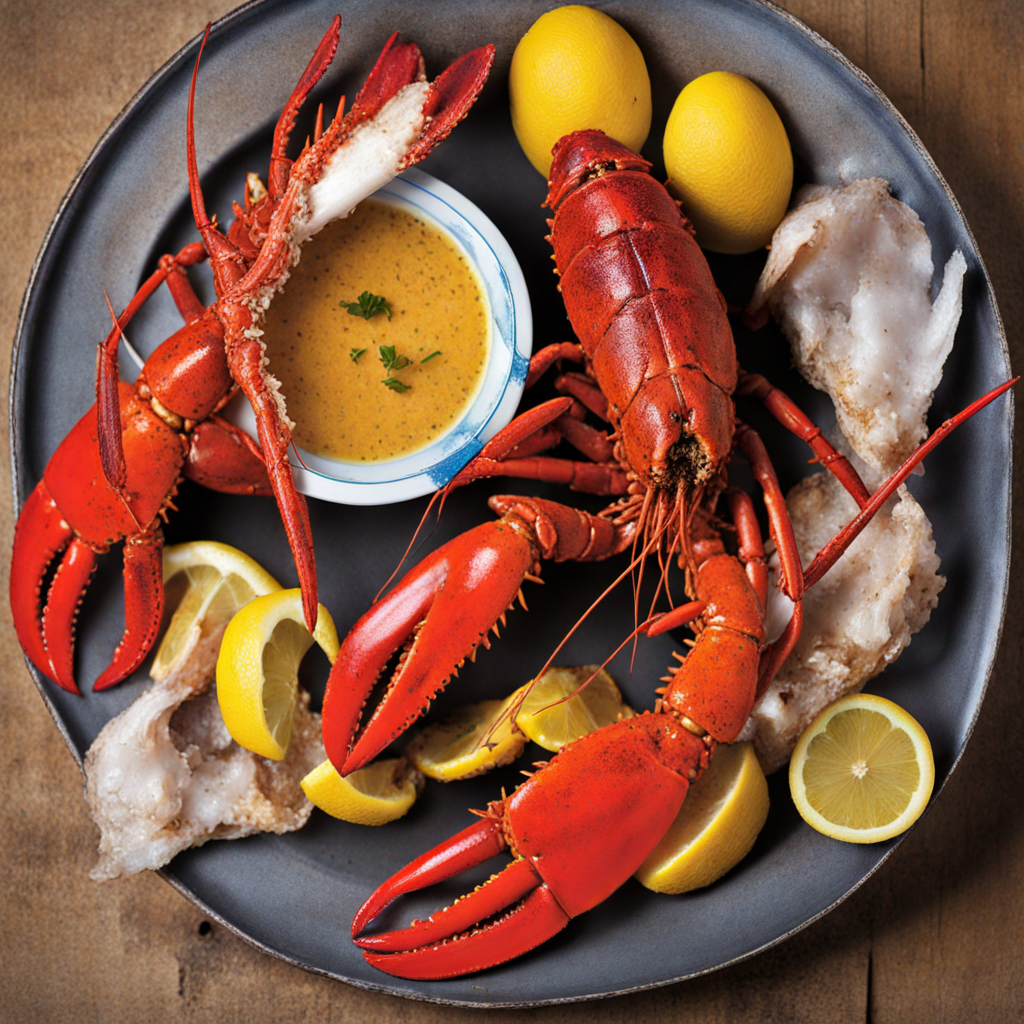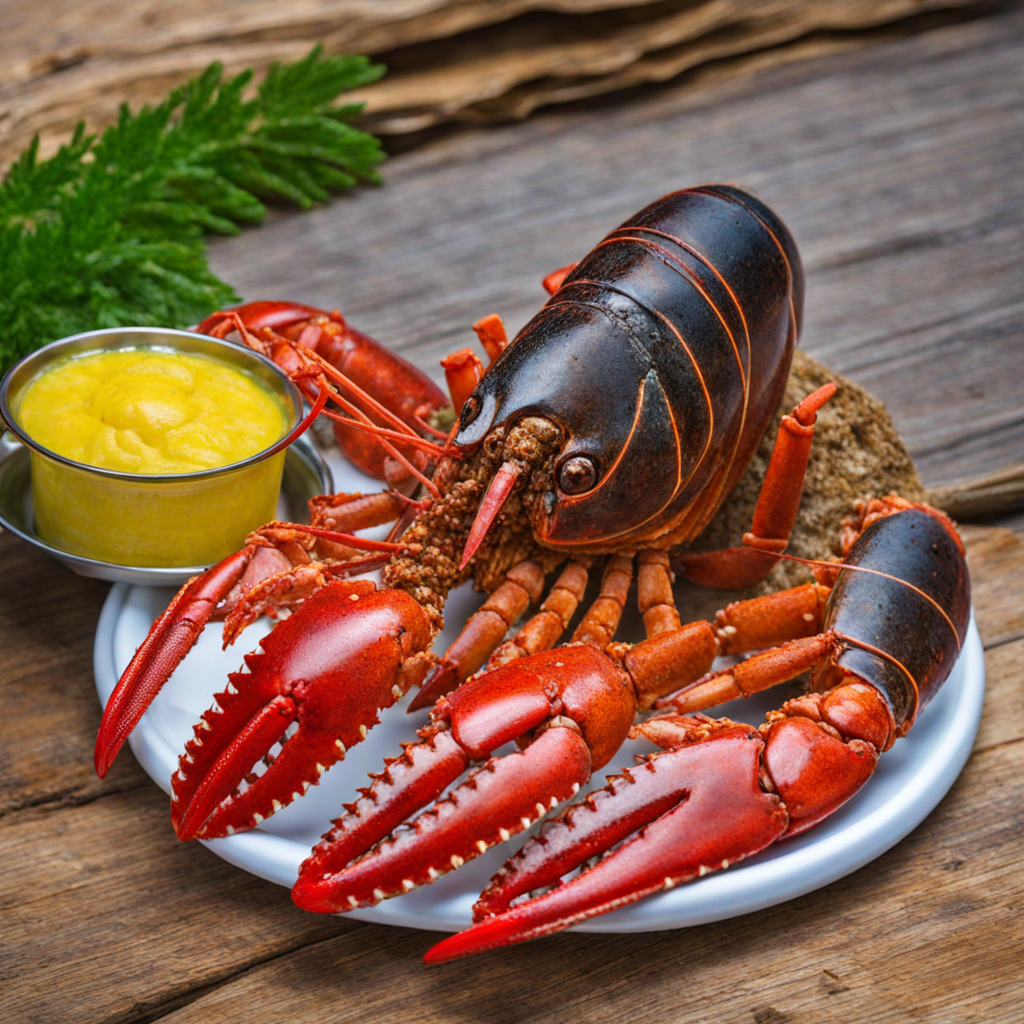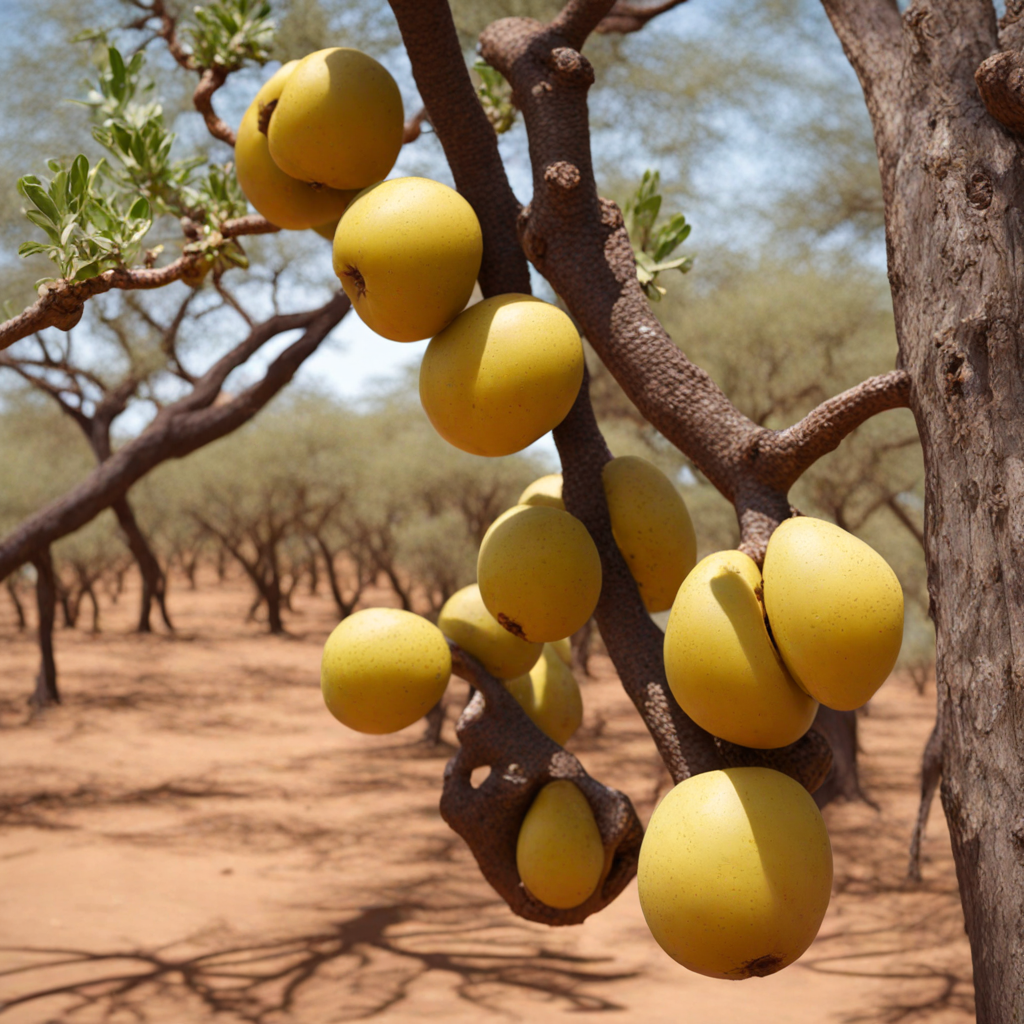Rock Lobster
Kreef, commonly known as Cape rock lobster or spiny lobster, is a delicacy that holds a significant place in Namibian cuisine. Historically, kreef has been part of the coastal communities' diet for centuries, with indigenous groups like the San and the Ovambo having harvested these crustaceans long before European colonization. The fishing industry began to grow in the 20th century, particularly after Namibia gained independence in 1990, leading to stricter regulations and sustainable practices to ensure the preservation of this valuable marine resource. Today, kreef is not only enjoyed locally but also exported, showcasing Namibia’s rich marine biodiversity. The flavor of kreef is often described as sweet and succulent, with a firm, tender texture that distinguishes it from other seafood. The meat has a rich, oceanic taste, complemented by subtle hints of brininess that evoke the pristine waters of the Namibian coastline. When cooked properly, kreef has an almost buttery quality, making it a prized ingredient in various culinary applications. The flavor profile can be further enhanced by the cooking method and accompanying ingredients, allowing for a versatile culinary experience. Preparation of kreef can vary, but it often involves simple yet effective techniques that highlight the lobster's natural flavor. The most common methods of cooking kreef include grilling, steaming, or boiling. For grilling, the kreef is typically split in half, brushed with a mixture of butter, garlic, and herbs, and then cooked over open flames or on a
How It Became This Dish
Kreef: A Culinary Jewel of Namibia Kreef, the Namibian term for crayfish or rock lobster, holds a special place in the gastronomic landscape of Namibia, melding the country's rich maritime heritage with its diverse cultural tapestry. This crustacean, known scientifically as *Jasus lalandii*, thrives off the southern coasts of Africa, particularly in the cold, nutrient-rich waters of the Atlantic Ocean that bathe Namibia's coastline. The history of kreef is not merely a tale of a seafood delicacy; it encapsulates the evolution of food culture in Namibia and its significance to the local communities. #### Origins and Early Harvesting The indigenous populations of Namibia, particularly the Khoisan, have a long-standing relationship with the ocean and its bounty. While the Khoisan primarily relied on terrestrial resources, the arrival of European explorers in the 15th century opened new doors to marine life, including kreef. Early explorers and settlers, particularly the Dutch and later the Germans in the late 19th century, began to recognize the potential of the region's seafood, including kreef. The initial methods of harvesting kreef were rudimentary. Fishermen would use simple nets and traps, often made from natural materials, to catch these crustaceans. The local coastal communities developed a profound understanding of the tides, the best times for fishing, and the habitats where kreef thrived. This knowledge was passed down through generations, intertwining the people’s identity with their environment. #### Cultural Significance Kreef holds great cultural significance in Namibia. It is not just a food source but also a symbol of community and celebration. Traditionally, kreef was often served during communal feasts and special occasions, reflecting the importance of sharing and togetherness in Namibian culture. The preparation of kreef varies from one community to another, with each group adding its unique twist. Namibians have a deep-rooted belief in the connection between food and identity. Kreef, with its rich, succulent meat, represents not only the sea’s bounty but also the resilience and adaptability of the people who rely on it. The dish has become emblematic of Namibian coastal cuisine, often featured in festivals, family gatherings, and as part of a traditional meal. #### Development Over Time As Namibia underwent political and social changes throughout the 20th century, so did its culinary practices. Following independence in 1990, there was a resurgence of interest in local cuisine, and kreef enjoyed a renaissance. This period saw a growing appreciation for traditional foods as symbols of cultural heritage, leading to a renewed focus on sustainability and responsible fishing practices. Modern methods of harvesting kreef have evolved significantly. Today, commercial fishing companies utilize advanced technology to ensure sustainable practices. However, the essence of kreef as a local delicacy has remained intact. The growth of tourism in Namibia has also propelled kreef into the international spotlight, with visitors eager to experience local flavors. Restaurants along the coast have adopted kreef into their menus, often preparing it with a variety of sauces and spices that reflect Namibia's multicultural heritage. The introduction of kreef into the culinary scene has led to innovative cooking styles. Chefs blend traditional techniques with contemporary gastronomy, showcasing kreef in various forms—from grilled and served with garlic butter to being incorporated into gourmet dishes like kreef pasta or kreef tacos. Food festivals and culinary events celebrating Namibian cuisine have further solidified kreef's status, allowing local chefs to experiment and elevate this beloved crustacean. #### Environmental and Economic Impact The kreef industry has significant economic importance for Namibia. It provides livelihoods for many coastal communities, from fishermen to those involved in processing and exporting. The sustainable management of kreef stocks is crucial, as overfishing poses a threat to the delicate marine ecosystem. The Namibian government has recognized this and implemented strict regulations to protect kreef populations, ensuring that both the environment and local communities can thrive. In recent years, there has been a concerted effort to promote eco-tourism and sustainable fishing practices. Many organizations are working with local fishermen to ensure that kreef harvesting is done responsibly, balancing economic needs with environmental stewardship. This commitment to sustainability has not only helped preserve the natural habitat but has also attracted environmentally conscious tourists eager to experience Namibian cuisine while supporting local communities. #### Kreef in Contemporary Namibia In contemporary Namibia, kreef continues to be celebrated, both in homes and restaurants. It is often regarded as a luxury food item, enjoyed during special occasions or as part of a feast. The preparation and serving of kreef have become a cherished ritual, with families gathering to enjoy this delicacy while sharing stories and laughter. The rise of social media has also played a role in the promotion of kreef. Pictures of beautifully plated kreef dishes flood platforms like Instagram, enticing food lovers from around the world to experience Namibian cuisine. This visibility has not only boosted tourism but has also fostered a sense of pride among Namibians regarding their culinary traditions. As the world becomes increasingly interconnected, kreef stands as a testament to Namibia's rich cultural heritage and the enduring connection between people and their food. The crustacean is no longer just a meal but a symbol of resilience, community, and the natural beauty of the Namibian coast. #### Conclusion The journey of kreef from its humble beginnings to a celebrated delicacy encapsulates the essence of Namibian culture and history. It reflects the land's natural bounty while serving as a reminder of the importance of community and tradition in culinary practices. As Namibia continues to navigate the complexities of modernity and globalization, kreef remains a cherished emblem of national pride, sustainability, and the enduring bond between people and the sea. Through its evolving story, kreef not only nourishes the body but also feeds the soul, connecting generations and celebrating the rich heritage of Namibia.
You may like
Discover local flavors from Namibia







